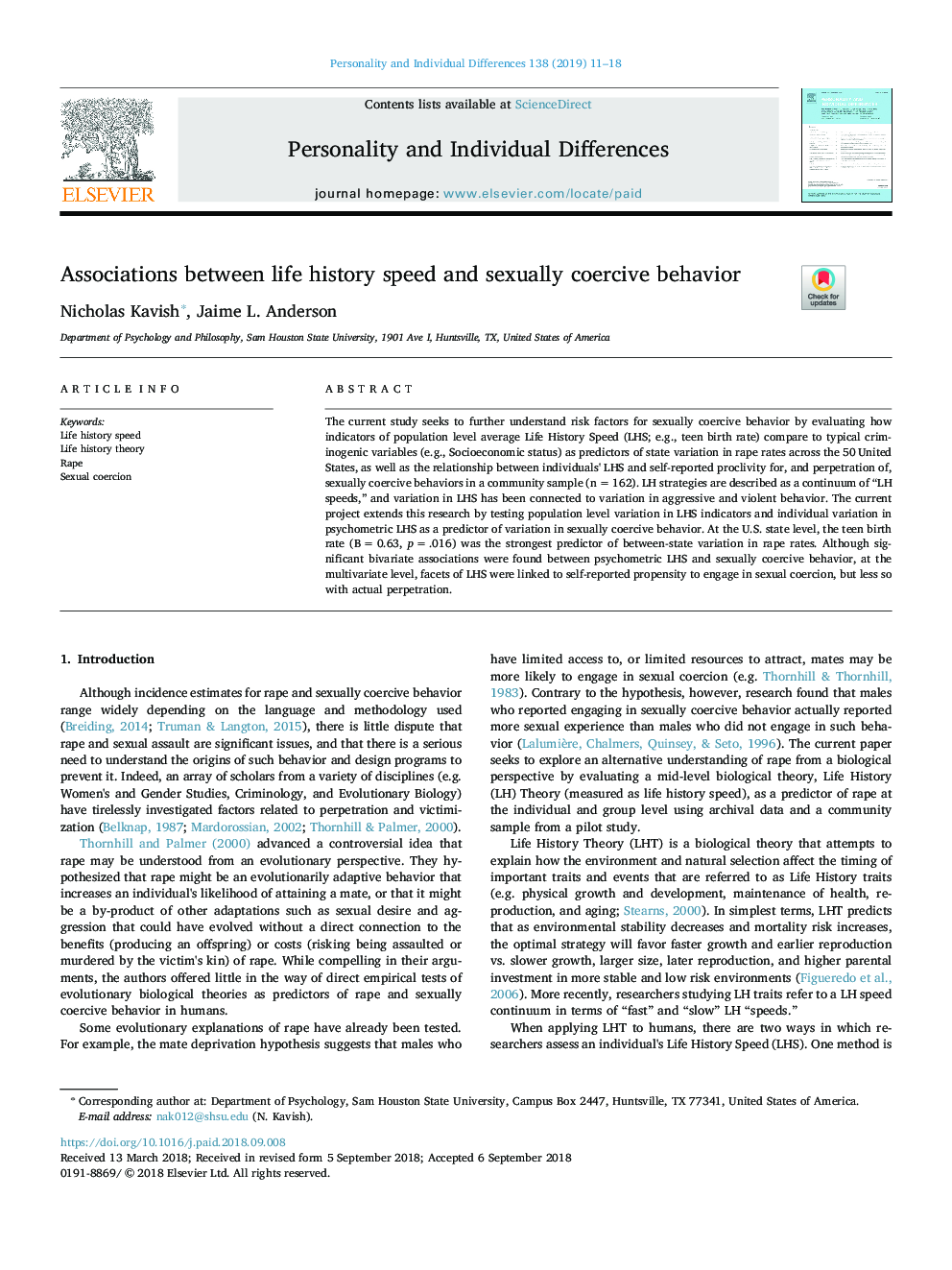| Article ID | Journal | Published Year | Pages | File Type |
|---|---|---|---|---|
| 10148995 | Personality and Individual Differences | 2019 | 8 Pages |
Abstract
The current study seeks to further understand risk factors for sexually coercive behavior by evaluating how indicators of population level average Life History Speed (LHS; e.g., teen birth rate) compare to typical criminogenic variables (e.g., Socioeconomic status) as predictors of state variation in rape rates across the 50â¯United States, as well as the relationship between individuals' LHS and self-reported proclivity for, and perpetration of, sexually coercive behaviors in a community sample (nâ¯=â¯162). LH strategies are described as a continuum of “LH speeds,” and variation in LHS has been connected to variation in aggressive and violent behavior. The current project extends this research by testing population level variation in LHS indicators and individual variation in psychometric LHS as a predictor of variation in sexually coercive behavior. At the U.S. state level, the teen birth rate (Bâ¯=â¯0.63, pâ¯=â¯.016) was the strongest predictor of between-state variation in rape rates. Although significant bivariate associations were found between psychometric LHS and sexually coercive behavior, at the multivariate level, facets of LHS were linked to self-reported propensity to engage in sexual coercion, but less so with actual perpetration.
Related Topics
Life Sciences
Neuroscience
Behavioral Neuroscience
Authors
Nicholas Kavish, Jaime L. Anderson,
